Índice:
- Introducción
- El significado de Mixquic en la cultura mexicana
- Historia de las celebraciones del Día de Muertos en Mixquic
- Costumbres y rituales tradicionales durante el Día de Difuntos
- Los elementos artísticos de las celebraciones de Mixquic
- Atracciones y eventos famosos en Mixquic
- Consejos para visitar Mixquic durante el Día de Muertos
- Conclusión: La belleza perdurable de la celebración de la vida y la muerte de Mixquic
- Vídeo informativo
Introducción
Cuando la gente piensa en México, se imagina colores, músicacomida y tradiciones en cada calle. México no es sólo hoy. También recuerda el pasado de maneras especiales. La cultura tiene muchos símbolos que muestran el respeto por la familia, la comunidad y el círculo de la vida. En cada pueblo se pueden encontrar historias. Estas historias se cuentan no sólo con palabras, sino también con canciones, adornos y momentos compartidos. Muchas de ellas son antiguas y proceden de los antepasados. Se transmiten de padres a hijos y siguen guiando hoy la identidad del pueblo.
Viajeros de todo el mundo visitan México para sentir esta conexión. Muchos quieren ver cómo el país celebra la vida. Quieren saber cómo las tradiciones mantienen a las familias cerca de sus antepasados, y cómo el arte y el espíritu forman parte de la vida cotidiana. Los visitantes buscan lugares que no sólo sean bellos, sino también significativos. México tiene muchos destinos en los que confluyen cultura e historia. Cada uno es único. Algunos son famosos por su comida, otros por su música, otros por sus edificios y otros por sus prácticas espirituales que invitan a la reflexión y al respeto.
Uno de estos lugares se encuentra en la zona de Ciudad de México, lejos de edificios altos y calles concurridas. Aquí, la vida es más lenta y las tradiciones más fuertes. Las calles son pequeñas, las casas sencillas, pero el sentido de comunidad es muy grande. Los lugareños reciben a los visitantes no como extraños, sino como amigos que pueden unirse a lo que es de todos. No se trata sólo de mirar, sino también de sentir, compartir y aprender. Las pequeñas cosas son muy importantes: una vela en un rincón, una canción en el aire o un artículo hecho a mano en el mercado. Juntos crean una atmósfera que habla sin palabras.
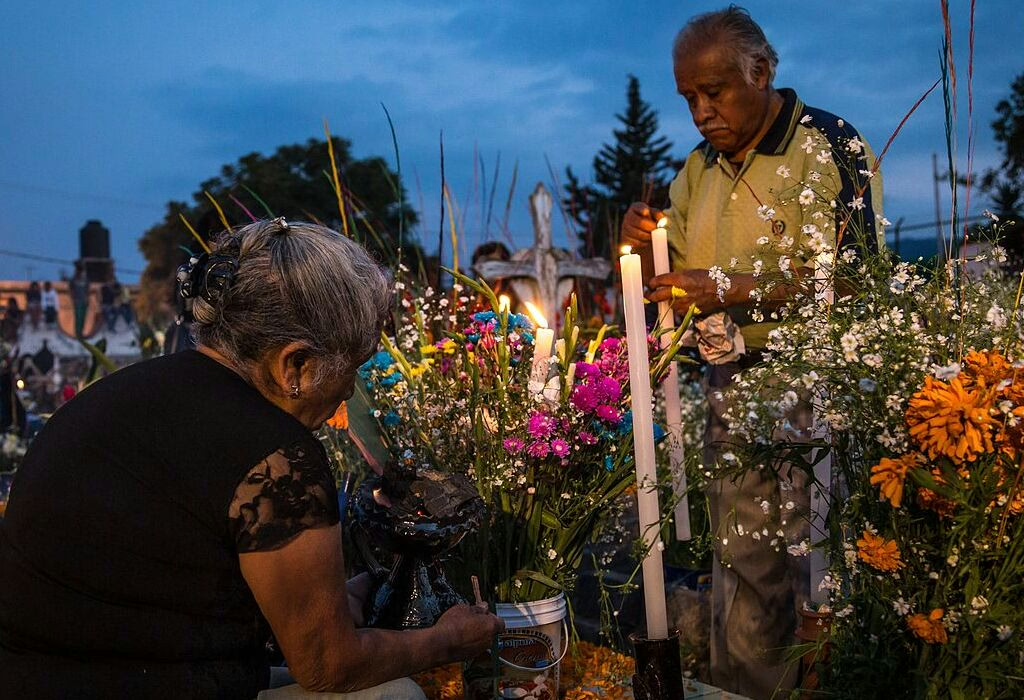
Para los viajeros que quieran ver algo auténtico, este tipo de lugar es perfecto.
No se trata de hoteles de lujo ni centros comerciales; se trata de pasear, observar y abrir el corazón para comprender otra forma de ver el mundo. Se trata de adentrarse en un barrio donde la gente está orgullosa de sus raíces y feliz de compartir sus tradiciones con cualquiera que muestre respeto. Aunque no hables español, puedes sentir el mensaje a través de los gestos, las sonrisas y el ritmo del ambiente.
Este artículo es una guía de una de esas comunidades. Explica la importancia de la zona, el origen de las celebraciones y lo que los visitantes pueden esperar. Pero antes de entrar en detalles, conviene reflexionar sobre por qué estas tradiciones son tan importantes para México en su conjunto. En la cultura mexicana, la idea de comunidad está siempre presente. La gente no vive sólo para sí misma, sino también para sus familias, vecinos y antepasados. Las celebraciones no son sólo acontecimientos; son formas de fortalecer las relaciones, de enseñar a los jóvenes y de honrar a los mayores.
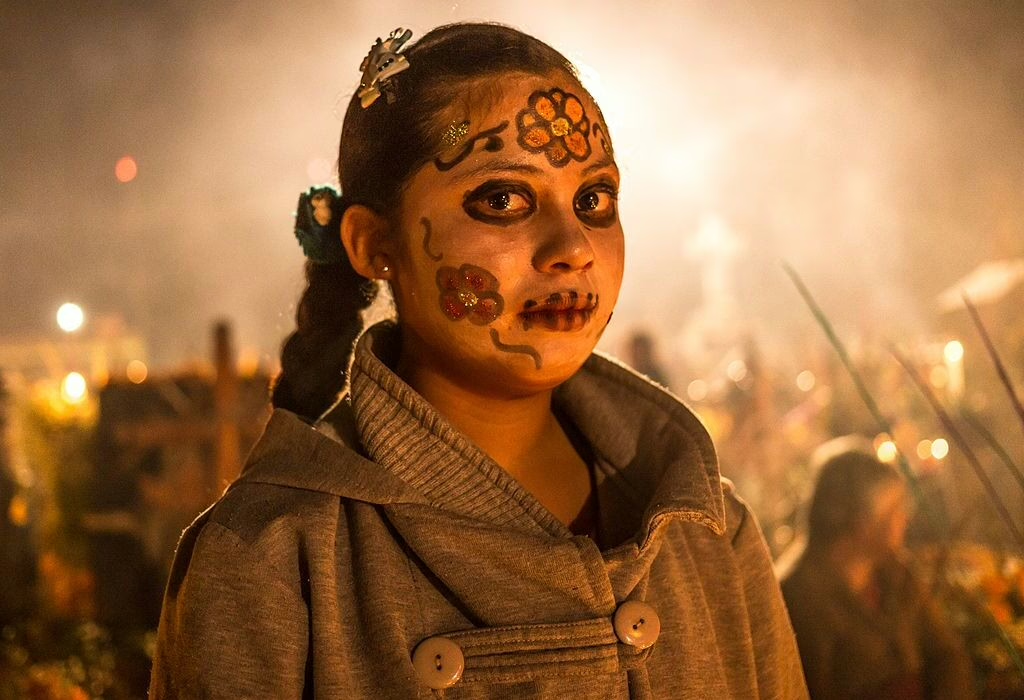
En un mundo globalizado,
donde muchas ciudades parecen iguales y la tecnología suele sustituir a la conexión cara a cara, un lugar como éste ofrece algo poco común. Nos recuerda que la humanidad no es sólo progreso y velocidad, sino también memoria y significado. Los viajeros que van allí suelen describir su experiencia como emotiva e inolvidable, no sólo por lo que ven sino también por lo que sienten. La combinación de ambiente, gente y profundidad cultural crea un recuerdo que dura años.
Otro punto importante es la accesibilidad. Dado que la ubicación no está lejos del corazón de Ciudad de México, los visitantes pueden planear un viaje corto y aun así experimentar algo completamente diferente del centro de la ciudad. El viaje en sí es parte de la aventura, ya que se pasa de calles concurridas en espacios más tranquilos y tradicionales. Para quienes gustan de explorar más allá de los lugares turísticos habituales, ésta es una excelente opción. Permite conectar con los lugareños, degustar la comida regional y presenciar tradiciones que no se escenifican para los turistas, sino que las familias viven con sinceridad.
Por último, esta introducción le invita a leer el artículo con curiosidad y respeto. A medida que avance por las secciones, descubrirá la historia, las costumbres, artey consejos de viaje. Pero más que información, considérelo una invitación a abrir sus sentidos a un mundo cultural único. Tanto si piensa visitarla en persona como si simplemente quiere aprender más desde casa, la historia de este lugar puede inspirarle. Se trata de entender cómo se conectan la vida y la memoria, cómo la gente mantiene viva su identidad y cómo las tradiciones pueden convertirse en puentes entre el pasado y el futuro.
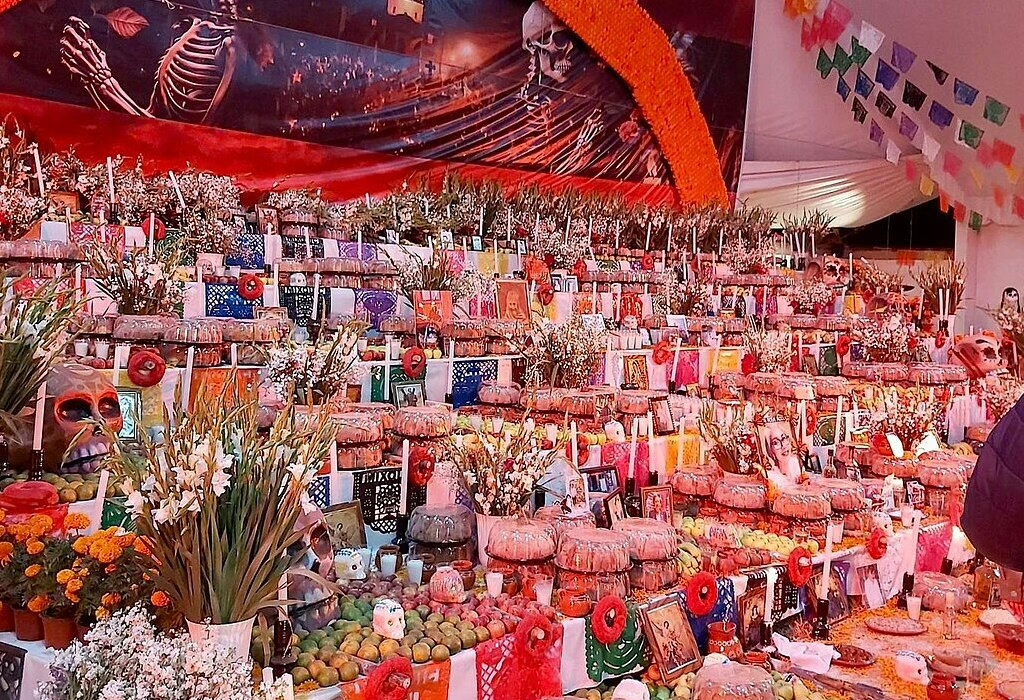
El significado de Mixquic en la cultura mexicana
Mixquic ocupa un lugar especial en la cultura mexicana. Es uno de los destinos más importantes para celebrar el Día de los Muertosun acontecimiento anual profundamente arraigado en tradiciones y creencias sobre la muerte y el más allá. Para la gente de Mixquic, el Día de los Muertos no es algo por lo que estar triste, sino más bien una colorida celebración de las vidas de los que ya no están aquí en la Tierra.
El nombre de la ciudad, Mixquic, significa "Lugar de las Nubes" en lengua indígena. Náhuatl idioma. Su ubicación añade una atmósfera mística que hace que la celebración sea más mágica y encantadora. Eche un vistazo a nuestra excursión Mixquic Día de Muertos (9 h).

Historia de las celebraciones del Día de Muertos en Mixquic
Las raíces de las celebraciones del Día de los Muertos de Mixquic se remontan a la época precolombina, cuando las culturas indígenas de México celebraban elaborados rituales para honrar a sus antepasados. Estos rituales se fusionaron más tarde con Tradiciones católicas (sincretismo) traído por el Conquistadores españolescreando una mezcla única de costumbres indígenas y europeas que aún hoy definen la celebración. Consulte nuestro artículo sobre la Semana Santa.
Según leyendaOriginalmente, el Día de los Muertos se celebraba en el noveno mes de la era cristiana. Azteca que corresponde aproximadamente al mes de agosto. Sin embargo, cuando los españoles llegaron a México, trasladaron la celebración para hacerla coincidir con el Todos los Santos y Difuntos católicos, el 1 y 2 de noviembre. Esta fusión de tradiciones indígenas y católicas dio origen a la hermosa celebración que conocemos como el Día de los Muertos. Echa un vistazo a nuestro post: Día de Muertos en la Ciudad de México (La guía definitiva más fácil).

Costumbres y rituales tradicionales durante el Día de Difuntos
El Día de Muertos en Mixquic es un momento para que las familias se reúnan y honren a sus antepasados. Las celebraciones comienzan el 31 de octubre con la llegada de los espíritus, que regresan a la Tierra para reunirse con sus familias y pasar un tiempo más a su lado. Las familias limpian y decoran las tumbas de sus antepasados, a menudo pasando toda la noche en el cementerio, encendiendo velas y cantando canciones.
Uno de los símbolos más emblemáticos del Día de los Muertos es el Calaverao calavera de azúcar. Estas calaveras están hechas de azúcar y tienen adornos de colores que se pueden comer. Las familias colocan estas calaveras en los altares junto con fotografías y objetos personales del difunto, simbolizando su presencia durante la celebración.
Otro elemento vital de la celebración es el ofrenda (altar), u ofrenda. Las familias crean impresionantes altares en sus casas con flores de caléndula, velas, incienso y los objetos favoritos de sus antepasados. alimentos y bebidas. Los altares sirven para dar la bienvenida a los espíritus y proporcionarles algo de comer y consuelo durante su visita.

Los elementos artísticos de las celebraciones de Mixquic
El arte de Mixquic es algo que hay que experimentar y admirar de cerca al menos una vez en la vida. Artesanos de todo México viajan a Mixquic durante las celebraciones del Día de Muertos, compartiendo su talento con lugareños y turistas a través de diversas formas artísticas.
Las esculturas de calaveras de azúcar son otra obra de arte que no muchos lugares tienen. Los artesanos pasan horas elaborando meticulosamente estas hermosas y coloridas calaveras. Utilizan azúcar, glaseado y adornos comestibles para dar vida a las calaveras. Cada calavera es una creación única. Suelen tener el nombre de alguien que ya no está aquí o con diseños y motivos diferentes.
Además de las calaveras de azúcar, Mixquic también es famosa por su intrincada artesanía tejida. Los artesanos locales crean hermosos tapices, cestas y otros artículos tejidos con técnicas tradicionales transmitidas de generación en generación. Estas artesanías suelen tener colores y dibujos intrincados, que reflejan el rico patrimonio cultural de Mixquic.

Atracciones y eventos famosos en Mixquic
Durante las celebraciones del Día de Muertos, Mixquic cobra vida con diferentes atracciones y eventos que te dejarán boquiabierto. Uno de los momentos más destacados es la procesión del 1 de noviembre: La "Mictlantecuhtli Desfile". En este desfile, bailarines, músicosy marionetas gigantes rinden tributo al dios del inframundo.
Otra atracción de visita obligada es la plaza mayor, un enorme mercado durante las fiestas. Aquí se puede comprar artesanía, obras de arte y cocina tradicional mexicana. La plaza principal también alberga música en directo actuaciones y espectáculos de danza.

Consejos para visitar Mixquic durante el Día de Muertos
Si estás pensando en ir a Mixquic para las festividades del Día de Muertos, aquí te damos algunos consejos amigables para que tu viaje sea mejor:
- En primer lugar, es muy importante tener en cuenta que esta celebración es muy especial para los lugareños. El Día de Muertos no es como Halloween, es una tradición muy sentida por la gente de Mixquic.
- Asegúrate de vestir adecuadamente, sobre todo si piensas entrar en la iglesia, y sé respetuoso mientras participas en las celebraciones. También es buena idea planearlo con antelación, ya que Mixquic se llena bastante en esta época del año.
- Intente reservar su alojamiento y el transporte que necesite con antelación para poder relajarse y disfrutar de su visita. Ten en cuenta que es posible que tengas que esperar largas colas en los lugares y eventos más populares, así que prepárate para ello.
Conclusión: La belleza perdurable de la celebración de la vida y la muerte de Mixquic
La forma en que Mixquic honra la vida y la muerte es más que una celebración: es una ventana al corazón de México. Visitar esta comunidad te da la oportunidad de ver cómo se vive la cultura en las calles, en las familias y en los pequeños detalles que la gente prepara con tanto esmero. No se trata sólo de lo que se ve, sino también de lo que se siente. La atmósfera es poderosa, emotiva y acogedora al mismo tiempo. Para muchos viajeros, se convierte en una de las experiencias más memorables de su viaje a México.
Lo que hace especial a Mixquic es el equilibrio entre alegría y respeto. Por un lado, hay colores vivos, música y expresiones creativas. Por otro, hay una profunda reflexión, momentos de tranquilidad y gestos de amor hacia los antepasados. Esta combinación es poco común en el mundo, y muestra cómo la cultura mexicana entiende la muerte no como el final, sino como un paso más en el círculo de la vida. Cuando estás en Mixquic, puedes sentir cómo la gente conecta el pasado, el presente y el futuro a través de esta tradición.
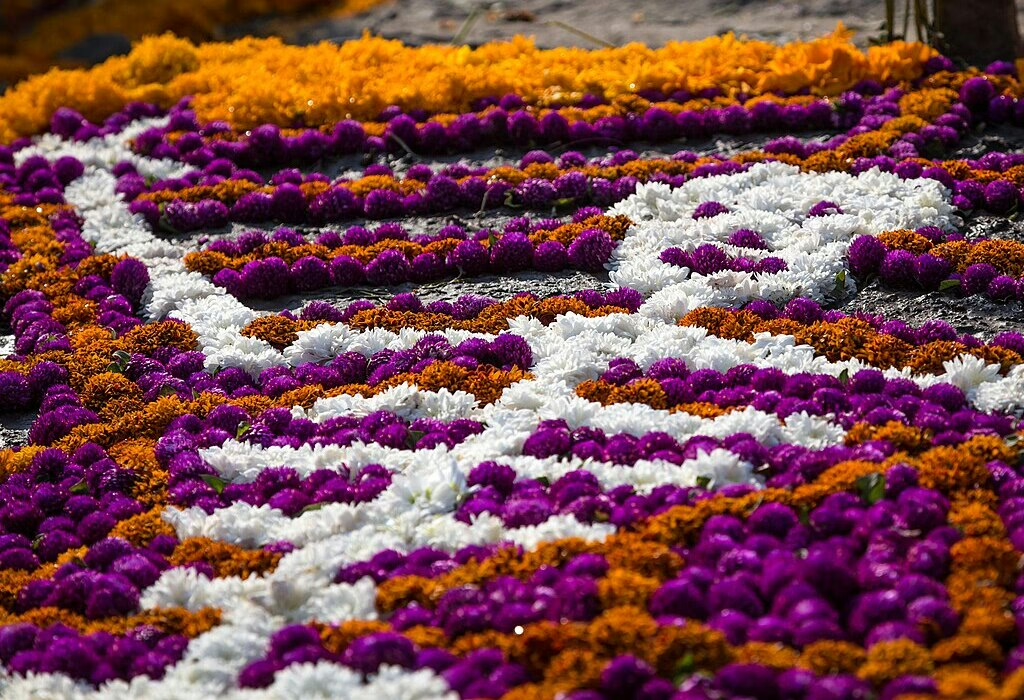
Otra razón por la que Mixquic tiene tanto sentido es la forma en que une a la gente.
Las familias se reúnen, los vecinos se apoyan mutuamente y se invita a los visitantes a unirse al espíritu del acontecimiento. Aunque no seas de México, te sentirás bienvenido, ya que la comunidad comparte sus costumbres con amabilidad. No es necesario entender cada símbolo ni cada palabra; la energía del lugar se explica por sí sola. Es una celebración que habla directamente al corazón.
Para los viajeros, también es una oportunidad de aprender algo nuevo sobre la vida. Estar presente en Mixquic durante el Día de los Muertos enseña paciencia, gratitud y aprecio. Demuestra que las tradiciones no sólo forman parte de los libros de historia, sino que están vivas y siguen creciendo. Cada vela, cada canción y cada sonrisa se suman al significado del evento. Si alguna vez tiene la oportunidad, vaya a ver Mixquic. Te dejará un recuerdo imborrable y una nueva forma de pensar sobre la vida y la muerte.
En México, la forma en que la vida y la muerte se conectan es bastante singular. El final de un viaje no es más que el comienzo de otro en MictlánMixquic es un lugar donde la tradición se une al arte. Mixquic es un lugar donde la tradición se une al arte y donde se celebra la vida y la muerte con mucho respeto y alegría. Si quieres vivir una experiencia llena de tradición, arte y significado cultural, incluye Mixquic en tu lista de viajes a México.
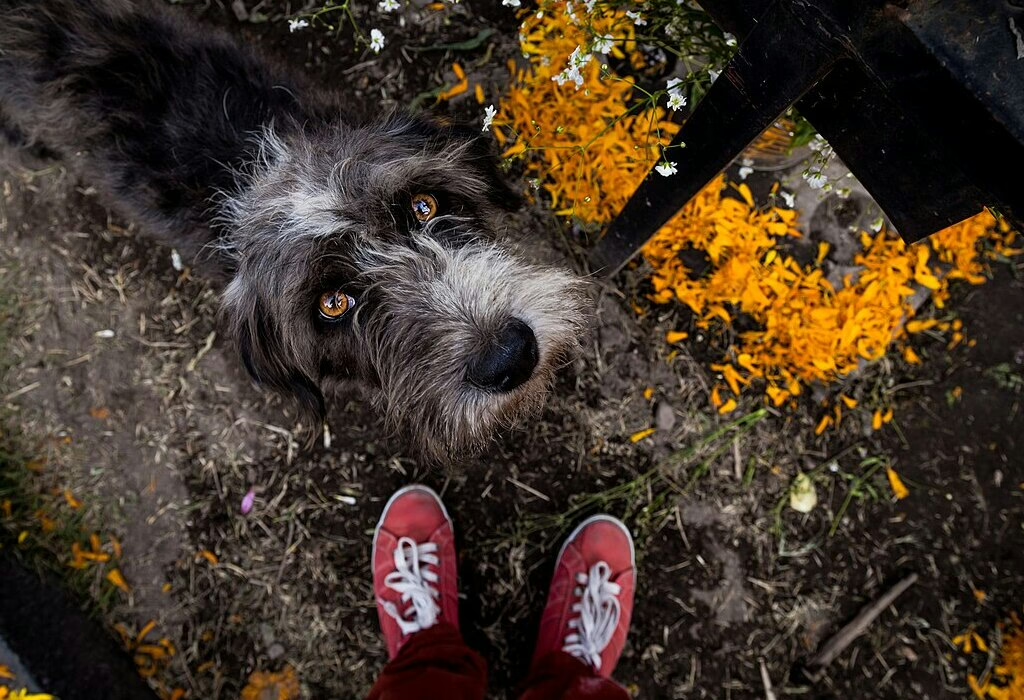
Consulte nuestras visitas guiadas:
- Asústate con historias de terror en Ciudad de México.
- Excursión a pie por Ciudad de México en Día de Muertos (4 h).
- Mixquic: Tour Día de Muertos (9 h).
- Día de Muertos en Ocotepec y más destinos (12 h).
- Espectáculo de La Llorona en los canales de Xochimilco (6 h).
